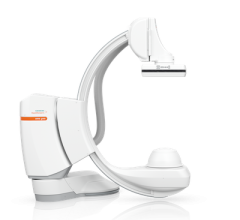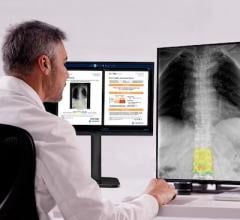BLOG: Real-time Intelligence: Optimizing Workflow through Planning and Preparation

Optimizing radiology workflow begins well before a radiologist opens an exam. Early planning and preparation are critical to driving efficiencies and prioritizing patient care. However, in many practices today, radiologists still spend time looking for pertinent patient information, digging through past reports, and searching for relevant priors before they can read an exam.
Real-time intelligence in the pre-read stages of the workflow can ensure that when opening the first study on a worklist, the radiologist can be confident that it is the correct study to read at that time, whether based on AI-integrated worklist triage, worklist prioritization, or SLA expectations. A well-optimized and intelligent workflow ensures the availability of all relevant reports, ensures all imaging is ready to be read, and prioritizes the studies. Thus, each radiologist can rest assured that all the necessary information, tools, and strategies are readily accessible to provide a timely and accurate assessment for every patient.
“Often, a radiologist must first find relevant prior reports and imaging to establish a comprehensive clinical picture, and that’s much time just in preparation,” said Karen Holzberger, senior vice president and general manager of Nuance Healthcare’s diagnostic solutions business. “AI can now help with that, and then the radiologist can more efficiently and thoughtfully evaluate the current imaging to determine the next step in the patient’s care journey.
Accessible Image Sharing
Intelligent workflow starts before the exam is performed. If the patient had imaging outside the current health system or care setting, how does the radiologist access the needed information? For many years, the standard industry process was for patients to bring physical CDs of imaging from previous procedures – and for many hospitals and specialty centers, this is still the case. These CDs are often corrupt or unreadable, leading to wasted patient and staff time, unnecessary repeat imaging, and an overall poor patient experience. Now, with cloud-based file-sharing systems, facilities can easily access and share medical data in real-time.
Applications like Nuance PowerShare Image Sharing help simplify the timely exchange of imaging among providers and facilities. Using a cloud-based system ensures that radiologists have access to all relevant prior imaging even before the scheduled exam occurs. The application can operate within a standard web browser to streamline image access, facilitating image exchange quickly and easily among users with different systems.
PowerShare can be especially helpful in rural areas where access to specialty care is not readily available or when patients transfer to new facilities—no matter how far away. Any of the more than 9,000 connected healthcare organizations using PowerShare can exchange and share through the network. Patients and referring facilities can share relevant imaging studies and reports before the patient meets with a new provider. This ability to share images in real-time across different facilities can help accelerate care. Likewise, in trauma scenarios, imaging studies can be sent to the care teams that can begin treatment planning before the patient arrives on site.
Worklist Prioritization
Once an exam is completed, intelligent workflow orchestration can prioritize worklists to make sure the right radiologist reads the right study at the right time. It could involve using AI-backed image analysis to prioritize exams with suspected urgent findings, escalating studies approaching a service level agreement threshold, or assigning a specific subset of exams to the most suitable specialists.
“We are looking at ways to put these tools to work so they’re not obtrusive and so that they continue to provide value around efficiency, productivity, and most importantly, quality,” Holzberger said. “Then the radiologists can do what they do best and provide the best possible interpretation to the care team.”
AI-backed technology can be implemented as a “first pass” to analyze images and identify any likely positive or negative findings. Cases with suspected critical findings are prioritized to be read first or reassigned to different worklists, and cases cleared of AI findings are moved lower on the worklist. “AI can add value by triaging some of the workload, bringing to the radiologists’ attention the most critical and time-sensitive cases. Further, radiology departments can auto-assign cases with no AI findings to another worklist or include them as part of a resident training or other quality programs,” Holzberger said.
Similarly, effective worklist prioritization can help identify cases that should be read by specialists and sub-specialists, which optimizes radiology resources, increase patient satisfaction, and can minimize time to diagnosis. And while AI can help provide a helpful support system or safety net for busy radiologists who may be facing burnout, Holzberger says the tools are meant to support the radiologist rather than be a substitution.
Intelligent workflow that harnesses AI and other innovative technologies streamlines and augments the planning and preparation so that everything a radiologist needs is front and center and readily available. But regardless of the technology, the radiologist ultimately has control of the decision,” noted Holzberger. “AI is one of many tools in the toolbox that help support and inform the radiologist so he or she can make the most appropriate interpretation and recommendation.”
Editor's note: This blog is the second in a four-part series about real-time intelligence in the radiology workflow, to be published monthly. The first blog can be found here. To learn more, visit nuance.com/healthcare/diagnostics-solutions



 December 05, 2025
December 05, 2025 









